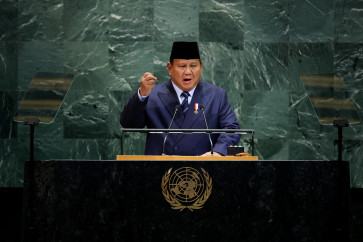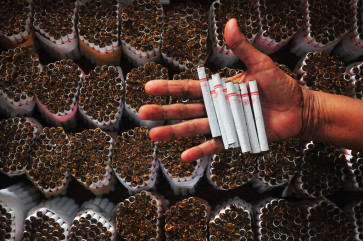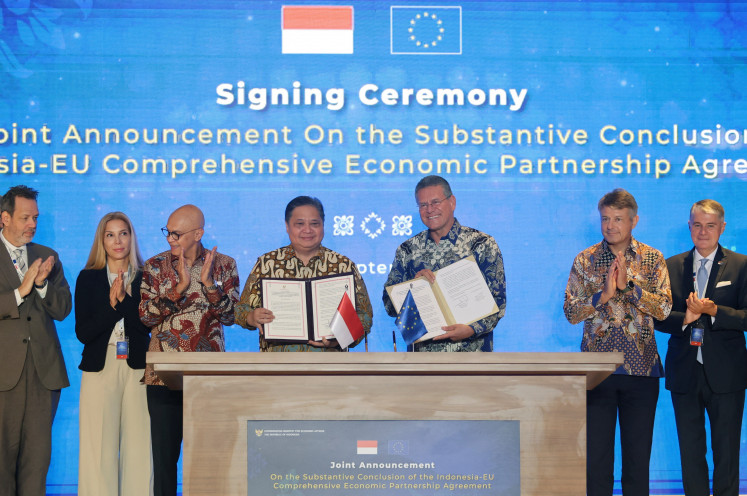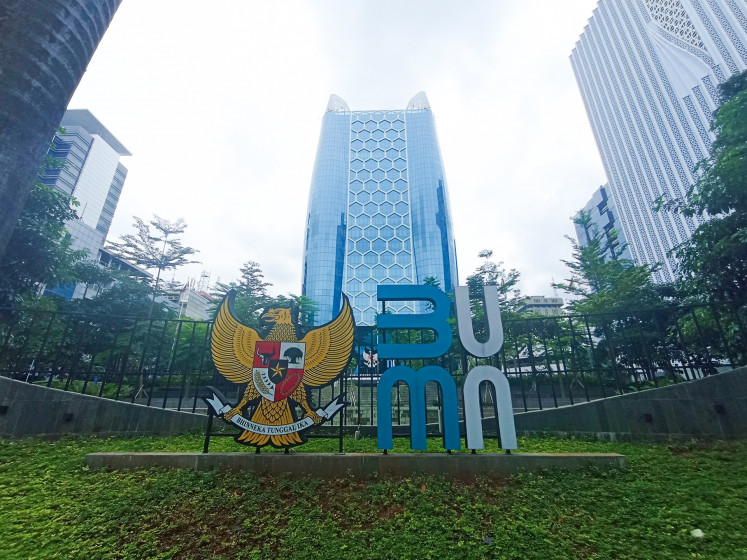Popular Reads
Top Results
Can't find what you're looking for?
View all search resultsPopular Reads
Top Results
Can't find what you're looking for?
View all search resultsRI to remain world's top palm oil producer until 2020
Indonesia will maintain its position as the worldâs biggest palm oil producer through 2020 and beyond as its production rise will be higher than that of main rival Malaysia, according to global business consultancy firm Frost & Sullivan
Change text size
Gift Premium Articles
to Anyone
I
ndonesia will maintain its position as the world's biggest palm oil producer through 2020 and beyond as its production rise will be higher than that of main rival Malaysia, according to global business consultancy firm Frost & Sullivan.
The majority of worldwide palm oil production will derive from Indonesia, which is expected to see production surge by 7.8 percent each year on average from 2011 through 2020, it estimates.
That compares with 5.9 percent average growth expected worldwide and 2.7 percent projected for Malaysia during the period, Frost & Sullivan global vice president for Asia Pacific Chris de Lavigne said.
The main driver of Indonesia's palm oil productivity would be wider planted area. The consultancy firm expects annual planted area growth of 6.7 percent or equal to 420,000 hectares for Indonesia compared with 3.5 percent growth in Malaysia, covering 150,000 hectares each year.
'Indonesia planted quite a lot over the last few years and its growth rate will continue to be higher than Malaysia,' Lavigne said.
Around 49 percent of total planted area in Indonesia is still immature and young; aging up to eight years, and with such low tree age profile, Southeast Asia's top economy will drive global supply growth, according to the firm.
Indonesia, however, would have to cope with some key challenges to achieve the projection, including higher production costs, low yields and market demand for sustainability, Lavigne added.
'One way to combat production costs is to be as productive as possible and one way to do that is to push increase yields per hectares, and that's done through a combination of things,' he explained, citing high-yield seeds and good agricultural practices.
Indonesia has been struggling to meet market demand for sustainability, as in past years key buyers such as consumer goods giant Unilever and Nestlé suspended purchase due to the allegation that the expansion of local oil palm plantations had caused massive deforestation.
A number of big plantations have tried to address this issue and now a high number of them have been certified by multi-stakeholder body the Roundtable on Sustainable Palm Oil (RSPO).
However, Lavigne said that palm oil producers should aim for more environmental schemes, which at the end would offer benefits or return on investment, such as premium prices.
Production in Indonesia may total an all-time high of 30.5 million tons or more this year, while Malaysia's output may reach a record 19.7 to 19.9 million tons this year, according to Dorab Mistry, director of Godrej International Ltd., as reported by Bloomberg. The two Southeast Asian producers together account for 86 percent of world supplies.










